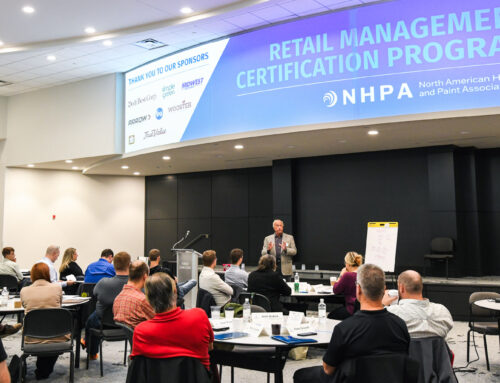Economic growth slowed during the first three months of the year, but consumers are still spending more than last year, says Jack Kleinhenz, National Retail Federation (NRF) chief economist.
“The U.S. economy lost some spring in its step during the first quarter as the pace of growth declined, and the downshift came with an unexpected bout of inflation,” Kleinhenz says, noting that prices for services are still increasing even as prices for goods level off. “But even with signs that the economic expansion is decelerating, the economy remains resilient, boosted by a solid job market and continued spending by consumers and businesses.”
Gross domestic product grew 1.6% in the first quarter, less than half the 3.4% seen in the fourth quarter of 2023, and the lowest level since 2.1% in the second quarter of last year, according to NRF’s Monthly Economic Review.
“While substantial progress has been made on inflation since its peak in 2022, high prices are sticking around longer than expected,” Kleinhenz says.
The Personal Consumption Expenditures Price Index (PCE) followed by the Federal Reserve showed that year-over-year inflation—driven largely by prices for services—went up to 3.4% during the first quarter. That compared with 1.8% in the previous quarter.
“Consumers clearly remain willing to spend on both goods and services despite ongoing cost pressures,” Kleinhenz says.
Consumer spending growth fell from 3.3% in the fourth quarter of 2023, but still grew 2.5% year over year in the first quarter. Total retail sales as reported by the U.S. Census Bureau was stronger than expected in March, rising 4% year over year compared with 2.1% in February.
Kleinhenz says the spending growth came amid economic data that shows the overall U.S. economy remains in good shape driven by a booming labor market with solid job growth and rising wages.
The three-month average payroll gain reached 276,000 in March, the fastest pace in a year, and the latest PCE data shows year-over-year private industry wage growth averaged 4.3% in the first quarter, unchanged from the fourth quarter of 2023.
Job openings fell to their lowest level in three years in March, but NRF says the labor market is loosening and potentially taking pressure off wage growth.With the first quarter concluded, employment numbers released recently pointed to continued economic growth but with a softening trend in the labor market.
Payroll grew by 175,000 jobs in April and the unemployment rate rose slightly to 3.9%, compared with 3.8% in March.
“With the labor market still rebalancing, economic growth still steady and financial conditions easy, we expect the Fed will likely push out the decision on easing of interest rates for some time yet,” Kleinhenz says.







